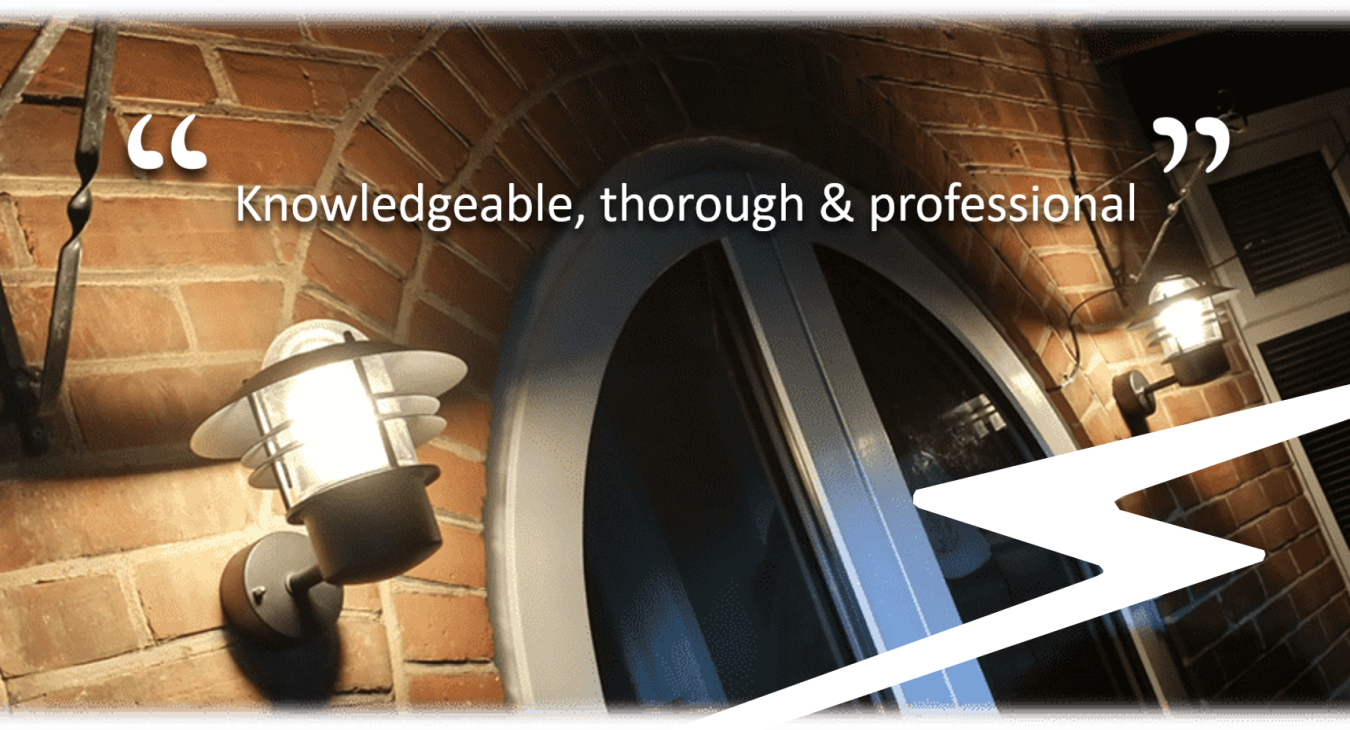This floodlight looks after 30 or so garages at night. It is strung on a 5 meter high pole, and has to light up the end garage some 60 meters away. The site is in Rochester, Kent.
The client reports that this particular halogen light has been working hard for the past 20 years. That's a feat in itself, for any electrical system that's been sat outside and had all weather thrown at it:-
Wind. Rain, Sunlight and UV. Often baking hot sunlight in the summers. Sleet and snow in the winters. Torrential rains. Morning frosts. Overnight freezes. And lets not forget that the temperature can vary by 20 degrees between night time and day time! that's an awful lot of expansion and contraction on a daily basis to contend with.
Upon taking a look, the control panel had far more water ingress inside it than I'd consider normal - or safe. The 3A fuse had popped, and the question one has to wonder is, why has it popped? What has caused this?
Discussing with the client, I had mentioned that 20 years is a very long time. And it's done well to make it so far. But what now? I think it's time to decommission the existing system and start afresh. At 20 years old all these parts are on the edge of failing. It doesn't make economic sense to 'polish a turd' and just replace bit by bit as and when it happens.
Things to think about in the design process:-
The pole is very tall. Scaffolding must be used to access this height safely.
The control part and the distribution board is suffering from water ingress. The next enclosure and distribution board should probably be correctly IP rated to prevent this from happening again.
The light is on a timer inside the control box, and a complimentary socket has been added for convenience. Both are good ideas. We'll replace these for new. Why is a timer a good idea in comparison to a motion sensor? It's the practical aspect. This floodlight looks after a thin but long strip of road with garages either side. Motion sensors can pick up on motion 20 meters away at best - certainly not 60 meters away. The best way of automating this floodlight is on a timer. And complimentary sockets next to the distribution board is a bit like insurance - it's not worth an awful lot til the moment you need it. Then it's worth it weight in gold.
The armoured cable is going to be replaced, and instead of going straight into the light, we will make it off in an IP rated box on the pole, and connect the light from there. This will make further light changes easier.
The light itself will be LED as standard in recent times. LEDs run cooler, use less power for the same light output, and generally last a lot longer than their halogen counterparts.
The brackets for the existing light are likely corroded and will probably need destroying to remove. We need similar brackets rated to hold the light - we're talking the best part of 10 Kg for this new light.
We probably want to be thinking about earthing the pole, something that the last installer hadn't considered. Why? because this pole is an extraneous conductive part, as well as a exposed conductive part, and must be earthed to make sure it never comes live. That's a little fib - It must be earthed to make sure that if it ever does become live, it's for such a short amount of time and the 'liveliness' of the pole is drawn away from anyone who may be touching it, it's an almost negligible amount.
The cable should again be armoured and suitably glanded either end. Why? To make sure the electrical cables inside are suitably protected mechanically, from water ingress, and from UV damage.
The distribution board itself should have RCD protection for extra protection to us, as living breathing things.
And here's the kicker that many might miss. Having a 200W LED floodlight comes with some nuances that could quite easily be missed at the design stage. The inrush current at switch on is massive. Let's call it a 230W light. at 230V this light in normal operation consumes 1A to produce the 230W of light.
What you may miss is at the start up stage, when the light is flicked on, it goes through a charge-up stage which draws a humungous amount of current. The datasheet we're looking at expects this light to draw 100A in the first two tenths of a second. That's a huge amount of current. Most residential properties would never reach 100A, even on full bore with the hob on, oven on, toaster, kettle and the electric shower on. You could probably add an electric vehicle charger and a few electric heaters, too, before you start getting near 100A. That's how much current 100A is, for reference.
Checking the manufacturer's instructions, not an awful lot is offered to help practically design for the power delivery to this light. Calling technical support for further clarification, they assure me that they've had it set up on just a 3A fuse on a plug top, and one by itself should probably do well like this.
We don't like probably. We want to overengineer this a little bit to make sure 1) the client does have the inconvenience of an early failure and 2) we don't want any callbacks!
upgrading the breaker to a C10. Putting the light on a relay, so the relay does the heavy lifting, and let the timer control the relay rather than trying to power the light itself. That definitely sounds like a good idea at not an awful lot of cost.
The client is also talking about potentially having CCTV fitted on the pole, two cameras facing in opposite directions - one at the entrance gate and one at the garages.
We can take the opportunity of the scaffolding already to mount the cameras. We could use armoured data cables than run to the cameras. But being so thin, they could be cut with a sharp pair of cutters anyway. And the top of the garage is low enough where the cables come out, they're within reaching height. We may as well use external data cable that is rated for the outside elements. The cameras are also suitably IP rated, and have a resolution of 8MP - that's 4K in TV language. They need this sort of resolution, especially the garage-facing one - to get clear images at such a distance. The last garages are some 60 meters away.
We did ask the client if they needed live TV - ie do they want to be access live footage is happens from an app on their phone as it's happening, but it would need a sim card for an internet connection, or would they like to be able to just visit the site and download the footage as and when they needed. They opted for the latter.
The recorder will be sat inside the IP rated box inside the garage, which will be lockable 1) because we don't want just anyone fiddling with the electrics for the floodlight and 2) because we don't want just anyone fiddling with the CCTV recorder.
TL:DR We put a lot into our design process. We offer bomb proof designs and world-class installations. This was the thought process we went through when we drew up a specification for a new distribution board, a new commercial grade LED floodlight, and a new CCTV system.
Find out about our outside light installations, or CCTV installations, or what we've been up to in Medway & Maidstone











